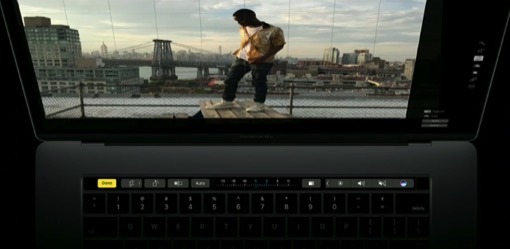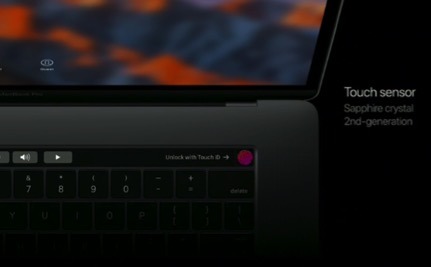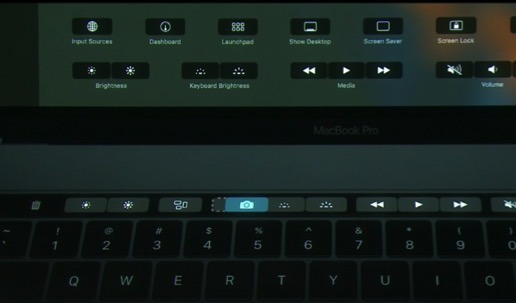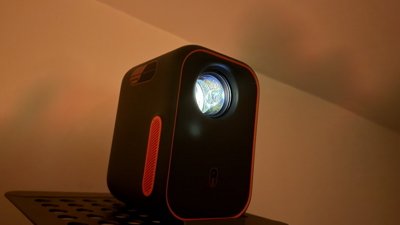In Apple's latest round of removal of traditional features on computers, the company has eradicated conventional Function keys, and has replaced them with a Retina, multi-touch Touch Bar.
At today's "hello again" event, Apple Senior Vice President of Worldwide Marketing Phil Schiller revealed the new Touch Bar as part of the renovations to Apple's new MacBook Pro line.
As part of the reveal, Schiller lamented the older Function key array in a eulogy. Noting that they were introduced in the IBM 3270 mainframe terminal in 1971, Schiller noted that modern users don't really use them for anything, with most of them having been re-purposed for media control and other infrequently used commands.
The Touch Bar is developer-customizable, and contextually displays menus and other features, including invocation of a conventional Function key lineup, if necessary.
The removal of the Function keys has also enabled Apple to implement Touch ID, without another case penetration. The sensor is embedded in the upper right of the Touch Bar with a Sapphire lens, and a secure enclave implementation with Apple's new T1 chipset.
Users can also perform a fast user switch using Touch ID — all it needs to invoke is a registered user to touch the Touch Bar's sensor, and macOS identifies the user, and authenticates based on the pre-registered fingerprint alone.
The Touch Bar can be customized in the Finder to implement control strip-based commands, and other user commands, such as screen capture, can be added to the bar as well. Other customizations in-app appear to be dependent on developers' implementation.
Features similar to iOS's text prediction in Messages has been implemented in macOS on the Touch Bar, as well as emoji entry. Other features demonstrated as implemented on the Touch Bar are application selection, scrubbing through media, and other playback controls.
 Mike Wuerthele
Mike Wuerthele










 Wesley Hilliard
Wesley Hilliard
 Malcolm Owen
Malcolm Owen
 Andrew Orr
Andrew Orr
 William Gallagher
William Gallagher
 Sponsored Content
Sponsored Content
 Christine McKee
Christine McKee

 Thomas Sibilly
Thomas Sibilly
-m.jpg)





47 Comments
The Lenovo Carbon lost the physical function keys a couple years ago and added an adaptive touch bar across the top. Not as nice as Apples but they were there before Apple.
And yet the base model MBP still has the function keys... You might want to change the title of this article.
icoco3
said:
.Hats off to Lenovo, then.
As demonstrated today, it's as significant a user interface breakthrough as the mouse and the finger, neither of which Apple invented either.
It's all in the execution, including the software and the integration with developers. Let's hope Lenovo and the other PC makers can keep up.
I like how it is the end of the physical function keys.... Well except the two notebook models that still have them. :) Hopefully they will put out a Thunderbolt Keyboard with the Touch Bar. Would like one on our iMac. This may well be the end of the Mac Pro. That shot with the two 5K displays and the peripherals looked very much like what they did with the Mac Pro and the 4K displays.